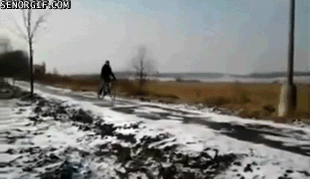Ah, there is nothing more satisfyingly righteous than judging people for being slightly lazier than us. Even among the elevator-riders in our office (which, for the record, is on the sixth floor) there is judging.
“Are you really riding the elevator up to just the second floor?” *scoff*
“Are you riding the elevator down one floor to the basement?” *incredulous guffaw*
“Me? No, no, I’m going all the way to the sixth floor. That’s much different.”
So, yes, elevators use energy. How much energy they use depends entirely on the type of elevator, though and results vary widely. Want to nerd out? Find out the details of your elevator and enter them into this nifty calculator. I put in the details for our office's two 6-story elevators and found that each one uses somewhere around 4,600 KWh. To put that in context, that's about the same as what the electric hot water tank that you might have in your basement uses, which is to say not very much in the grand scheme of things.
What this really comes down to is the fact that elevators are actually a shockingly efficient means of conveyance. They run up and down a fixed, low-friction path, and when they rise up they are actually storing potential energy, which they can use again for the return trip down. And let’s not forget what elevators make possible: they make buildings handicap accessible, they make moving heavy furniture up and down floors less awful, and they provide time in which strangers can stand and have short awkward exchanges or eavesdrop on fragments of other people's’ conversations… valuable stuff! So I don’t think it’s fair to say we could get rid of elevators entirely, and save ourselves the "embodied energy" of building and installing the things.
Translation: if you’re looking to save energy, by all means take the stairs (and hey, you'll get some likely much-needed exercise!), but if you're looking to dole out shame on friends and co-workers in order to get them to change their behavior, there is lower hanging fruit. When Slate’s Nina Rastogi got this question back in 2009, she calculated you use less energy taking the elevator than is saved after four hours by switching from an incandescent to a CFL.
Now, if you want me to scoff at something, don’t get me started on those silly “vintage” lightbulbs, or people who think driving a hybrid car gives them an excuse to drive as much as they want.










